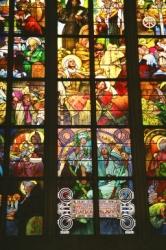Choosing a name is not so straight forward. Thanks to this small thing called numerology, we have to not just pull out one name out of the hat for each sex... but a slew of them to ensure atleast one fits the bill (or number, if you will).
There are also a couple of other things on the back of our minds. Fresh out of reading Jumpa Lahiri's "The Namesake" a couple of months ago, we are wary of choosing a name that kuttime will be ashamed to be called by for the rest of her life. Hence, the search for nice and practical names is high on the list of priorities.
My first name is great. Never had problems with it, mainly because most people around New York metropolitan area, with its huge hispanic population, thought it was Raul (rather than Rahul) and now here in Europe they still think it is Raul - like the Spanish/Real Madrid striker!!! Now, my last name is another matter. My second day in the US I was referred to as Anan..blah..blah..blah - by the Manager of the International Student Services and a woman of Indian origin!!!!!
I must thank my lucky stars that my Grandpa, when he made my passport forgot my actual first name and made my passport out with my "home" name - Rahul. My actual first name is Ramakrishnan!!! If my official name was Ramakrishnan Anantharaman.. forget it.. we won't even go there!!!
I have flirted with the idea of changing my official name to Rahul A. Raman as it is compulsary in our family to have a name with Rama shabda (hence the Ramakrishnans and Anantharamans). Never got around to doing it as it would be more pain to change everything. But, I made a decision then to name my child So-and-so R. Raman.
It is amazing then that I came across this absolutely hilarious post on South Indian names through Amit Varma's IndiaUncut. I present a sampling of the post but urge you to read the complete post at http://sidin.blogspot.com/2004/05/travails-of-single-south-indian-men-of.html . It is a must read and one of the funniest pieces I have ever come across.
"Our futures are shot to hell as soon as our parents bestow
upon us names that are anything but alluring. I cannot imagine a more foolproof way of making sure the child remains single till classified advertisements or that maternal uncle in San Francisco thinks otherwise. Name him "Parthasarathy Venkatachalapthy" and his inherent capability to combat celibacy is obliterated before he could even talk. He will grow to be known as Partha. Before he knows, his smart, seductively named northy classmates start calling him Paratha. No woman in their right minds will go anyway near poor Parthasarathy. His investment banking job doesn't help either. His employer loves him though. He has no personal life you see. By this time the Sanjay Singhs and Bobby Khans from his class have small businesses of their own and spend 60% of their lives in discos and pubs. The remaining 40% is spent coochicooing with leather and denim clad muses in their penthouse flats on Nepean Sea Road. Business is safely in the hands of the Mallu manager. After all with a name like Blossom Babykutty he cant use his 30000 salary anywhere. Blossom gave up on society when in school they automatically enrolled him for Cookery Classes. Along with all the girls.
Yes my dear reader, nomenclature is the first nail in a coffin of neglect and hormonal pandemonium. In a kinder world they would just name the poor southern male child and throw him off the balcony. "Yes appa we have named him Goundamani..." THUD. Life would have been less kinder to him anyway."
And what's in a name you ask.........

